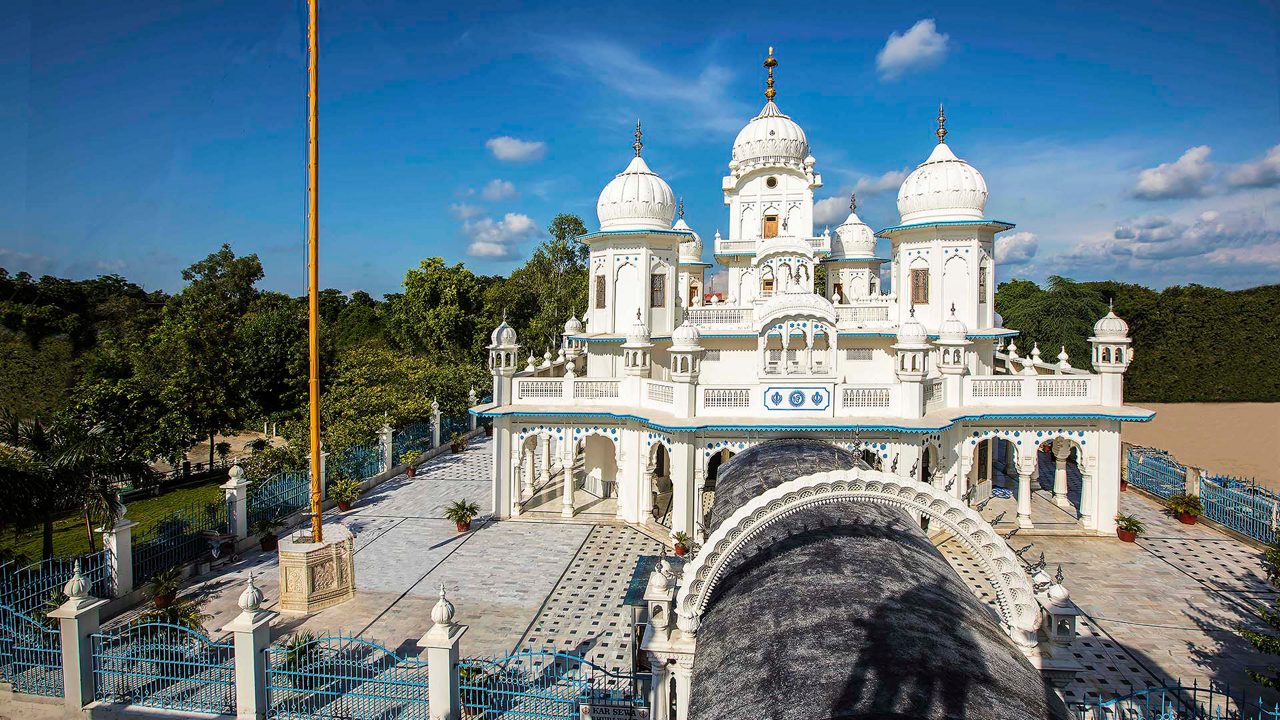Gurudwara Sri Hatt Sahib is a significant historical and religious site located in Sultanpur Lodhi, Kapurthala district, Punjab, India. This sacred place is closely associated with the early life of Guru Nanak Dev Ji, the founder of Sikhism. The Gurudwara marks the location where Guru Nanak Dev Ji worked at a provision store, an experience that profoundly influenced his spiritual journey and teachings.

Historical Background
In the late 15th century, Guru Nanak Dev Ji's sister, Bebe Nanaki, was married to Jai Ram, an official in the service of Nawab Daulat Khan Lodhi of Sultanpur Lodhi. Recognizing Guru Nanak's wisdom and potential, Jai Ram recommended him for a role at the Nawab's Modi Khana, or provision store. Guru Nanak accepted the position and began working as the storekeeper, a job that eventually became a backdrop for several significant spiritual events that would mark his divine journey.
Significant Events at Gurudwara Sri Hatt Sahib
While managing the Modi Khana, Guru Nanak Dev Ji's divine nature began to shine through in several notable incidents:
The 'Tera' Phenomenon: One of the most notable occurrences involved Guru Nanak counting provisions. When he reached the number thirteen, which is pronounced as 'Tera' in Punjabi (meaning 'Yours'), he would repeatedly utter "Tera, Tera, Tera." This phrase symbolized his realization that everything in the world belongs to the Divine. Through this act, Guru Nanak expressed his deep devotion to God and underscored his belief in the omnipresence of the Divine in all aspects of life.
Distribution of Wealth: In line with his teachings of selfless service and charity, Guru Nanak Dev Ji is said to have used the resources available at the Modi Khana to help the poor and needy. His actions reflected his commitment to the values of equality, compassion, and generosity, principles that are central to Sikhism. By distributing the wealth, he demonstrated that material possessions should be shared for the greater good and that serving humanity is an essential part of spiritual life.
These events at Gurudwara Sri Hatt Sahib continue to inspire Sikhs worldwide. They serve as reminders of Guru Nanak's teachings on the oneness of God, the importance of humility, and the value of selfless service to others.
Architectural Features of Gurudwara Sri Hatt Sahib
Gurudwara Sri Hatt Sahib’s architecture reflects traditional Sikh design elements, providing a serene and spiritual atmosphere for visitors.
Main Hall: The central prayer hall of the Gurudwara is where the Guru Granth Sahib, the holy scripture of Sikhism, is placed. This hall serves as the main space for daily prayers, where hymns and prayers are recited by the congregation. The hall is designed to accommodate a large number of devotees, creating a space for communal worship and reflection.
Historical Artifacts: The Gurudwara preserves several historical artifacts, including stones believed to have been used by Guru Nanak Dev Ji as weights during his time at the Modi Khana. These stones hold significant historical value, connecting the present generation with the Guru's humble beginnings and his teachings of equality and service.
Surrounding Complex: The surrounding complex of Gurudwara Sri Hatt Sahib is designed to cater to the needs of pilgrims. It includes accommodations for visitors, allowing them to stay while they pay their respects. The Langar Hall, a community kitchen, serves free meals to all visitors, reflecting Guru Nanak’s teachings on selfless service and equality. The complex also features serene gardens, offering a peaceful space for reflection and spiritual growth.
Spiritual Significance
Gurudwara Sri Hatt Sahib holds deep spiritual significance for Sikhs as it symbolizes the early life of Guru Nanak Dev Ji and his foundational teachings on humility, service, and devotion. For Sikhs, the Gurudwara is not just a place of worship but a living testament to the Guru's commitment to living a simple life dedicated to the well-being of others.
Pilgrims visit this sacred site to connect with the Guru's legacy, seeking inspiration from his actions and words. The Gurudwara serves as a constant reminder of key Sikh values such as equality, charity, and selfless service. It encourages visitors to reflect on their spiritual journey and to incorporate the principles of humility, compassion, and devotion into their daily lives. This spiritual connection empowers individuals to strive toward living a life aligned with the teachings of Guru Nanak Dev Ji, developing a deeper sense of purpose and service to humanity.
Visiting Gurudwara Sri Hatt Sahib
Sultanpur Lodhi, where Gurudwara Sri Hatt Sahib is located, is well-connected by road and rail, making it easy for devotees and tourists to visit. The town itself is of great historical significance, as it hosts several other Gurudwaras that commemorate various key events from Guru Nanak Dev Ji’s life, adding to its spiritual importance. Visitors to the Gurudwara can participate in community services, attend prayer sessions, and experience the peaceful, spiritual ambiance that surrounds the site. It is a place where pilgrims can not only connect with the Guru's teachings but also engage in acts of service, furthering the spirit of humility and devotion.
Conclusion
Gurudwara Sri Hatt Sahib is more than just a place of worship; it is a beacon of the teachings of Guru Nanak Dev Ji. The Gurudwara serves as a constant reminder of the virtues of honesty, humility, and the importance of recognizing the Divine in all aspects of life. A visit to this sacred site offers valuable insight into the early life of Guru Nanak and the foundational principles of Sikhism. For those who seek to understand and embrace the values of Sikhism, this Gurudwara provides a meaningful and enriching experience.
Note- We have made every effort to ensure the accuracy and reliability of the information provided. However, this content is intended for informational purposes only and reflects historical and cultural perspectives. DVN does not assume responsibility for any disputes or actions that may arise from the use of this content. If you believe any information is incorrect or misleading, please contact us.